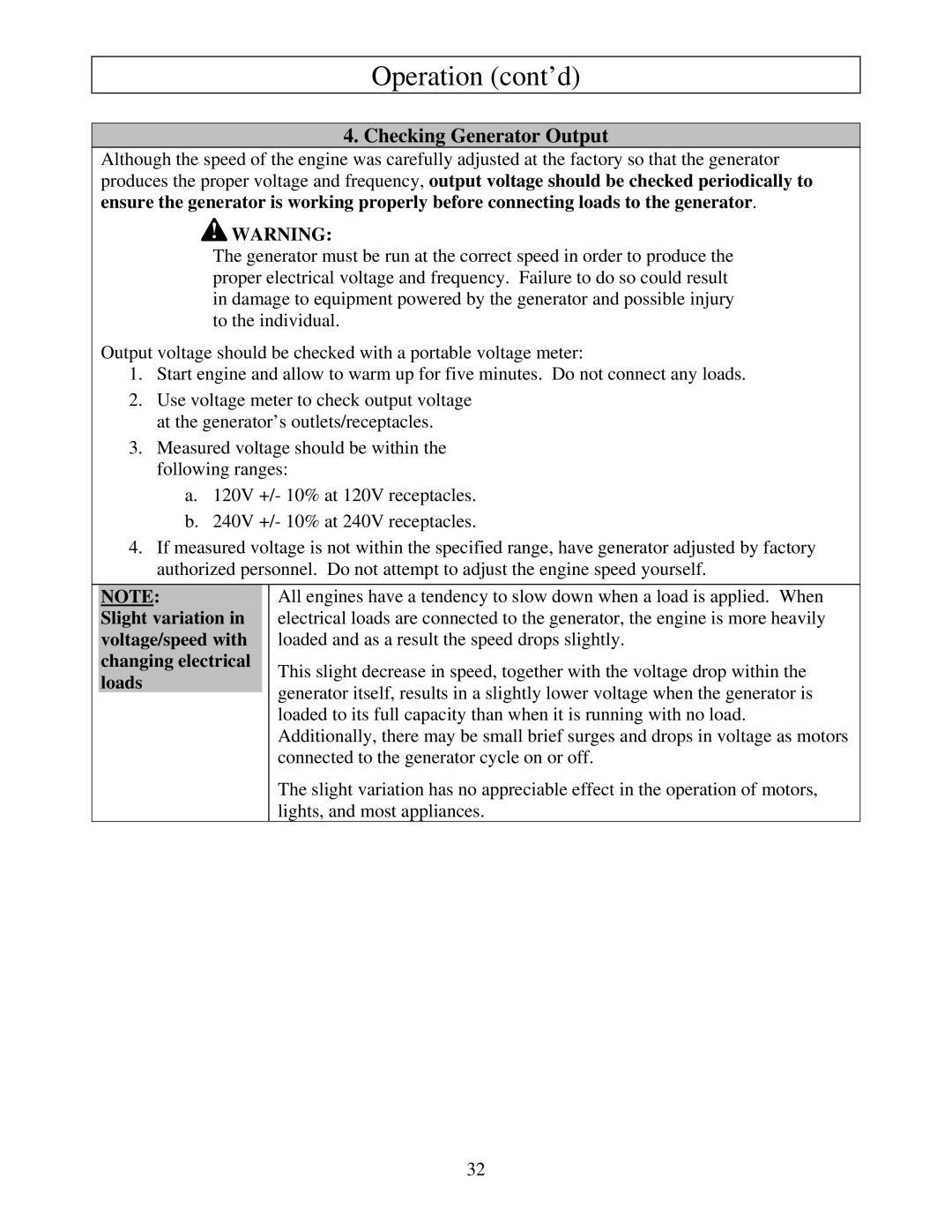
Operation (cont’d)
4. Checking Generator Output
Although the speed of the engine was carefully adjusted at the factory so that the generator produces the proper voltage and frequency, output voltage should be checked periodically to ensure the generator is working properly before connecting loads to the generator.
![]()
![]()
![]()
![]() WARNING:
WARNING:
The generator must be run at the correct speed in order to produce the proper electrical voltage and frequency. Failure to do so could result in damage to equipment powered by the generator and possible injury to the individual.
Output voltage should be checked with a portable voltage meter:
1.Start engine and allow to warm up for five minutes. Do not connect any loads.
2.Use voltage meter to check output voltage at the generator’s outlets/receptacles.
3.Measured voltage should be within the following ranges:
a.120V +/- 10% at 120V receptacles.
b.240V +/- 10% at 240V receptacles.
4.If measured voltage is not within the specified range, have generator adjusted by factory authorized personnel. Do not attempt to adjust the engine speed yourself.
NOTE:
Slight variation in voltage/speed with changing electrical loads
All engines have a tendency to slow down when a load is applied. When electrical loads are connected to the generator, the engine is more heavily loaded and as a result the speed drops slightly.
This slight decrease in speed, together with the voltage drop within the generator itself, results in a slightly lower voltage when the generator is loaded to its full capacity than when it is running with no load.
Additionally, there may be small brief surges and drops in voltage as motors connected to the generator cycle on or off.
The slight variation has no appreciable effect in the operation of motors, lights, and most appliances.
32
